(Ira Watkins is an artist from Waco. In 2005, he painted a mural of Dr. Martin Luther King Jr. on the old pier that used to support the Interurban Railroad bridge. Now the old pier with its beautiful mural. serves as an observation deck overlooking the Brazos near the East end of the Suspension Bridge. Mr. Watkins lives in San Francisco, but has family in Waco and still visits frequently. Sarah Frank interviewed him by telephone from his home in California. – ALW)
By Sarah Frank
A few weeks ago I took some time out of my lunch break to visit the Suspension Bridge and take a walk through the park. I stopped for a moment to admire one of my favorite Waco murals, that of Martin Luther King delivering his famous “I Have a Dream” speech to thousands.
As the daughter of a black man I was raised to know African American history. I know all the names by heart, from Rosa Parks and Sojourner Truth, to Emmett Till and Jesse Washington. When I told my dad I was going to school in Waco, I remember him asking “Do you know what happened there?” At the time, I had never put it together that the Waco in which the lynching of Washington occurred was the same Waco I was moving to. I spent the rest of the night searching for other lynchings and racist acts in the Waco area, questioning my own judgement to move there. I had passed through Klan country before and in my terrified state I imagined Waco would be the same.
Four years later, I’m still here and I love Waco more now than ever.
Acts of love and peace like the painting of the MLK mural give me and the rest of the community a sense of hope, which was exactly the intention behind artist Ira Watkin’s painting. A few days after my visit to the mural I had the privilege of interviewing Mr. Watkins about growing up in Waco and the purpose behind the mural. This was the first time I had spoken to an African American native of Waco about the history here, and I was eager to gain a new perspective on my current home and its past.
“I have more flowers in my yard than they do at MLK park”
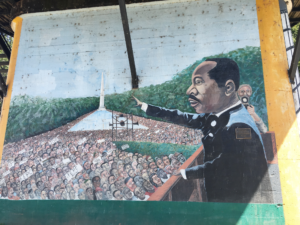 The idea of the mural was originally spawned as a beautification project. Mr. Watkins explained that he had a friend over at his house one day and they were looking through an Ebony magazine. His friend mentioned the lack of beauty in the Martin Luther King Jr. Park and said, “I have more flowers in my yard than they do at the MLK park.” He went on to ask Watkins to paint a mural for the park. Watkins agreed and chose to paint a mural of the images of King that were displayed in an Ebony magazine. Watkins went on to talk about King, mentioning, “To me, it’s like MLK was an inspiration. Sometimes God puts different people on the planet not just to give a message from a religious perspective, but from a humanitarian perspective.”
The idea of the mural was originally spawned as a beautification project. Mr. Watkins explained that he had a friend over at his house one day and they were looking through an Ebony magazine. His friend mentioned the lack of beauty in the Martin Luther King Jr. Park and said, “I have more flowers in my yard than they do at the MLK park.” He went on to ask Watkins to paint a mural for the park. Watkins agreed and chose to paint a mural of the images of King that were displayed in an Ebony magazine. Watkins went on to talk about King, mentioning, “To me, it’s like MLK was an inspiration. Sometimes God puts different people on the planet not just to give a message from a religious perspective, but from a humanitarian perspective.”
“You see these freckles? That’s the n*gger in me.”
After discussing the conception of the mural, I moved on to ask Watkins more about growing up as an African American in Waco and in the United States. He told stories of his old stomping grounds, of what he did for money, and who his friends were. Despite having what seems to me as a relatively normal childhood, Watkins told me a short story which stuck with me:
“When I was there in Waco as a kid, there was one white dude named Ralph that we socialized with and we could go up to his house as long as his parents weren’t there. He had freckles, he always said, “You see these freckles? That’s the n*gger in me.”
Watkin’s story surprised me for two reasons: the fact that he could only go to Ralph’s if his parents weren’t home and Ralph’s comment about his freckles. This story is a product of its time, steeped in prejudice but also in progress. Ralph’s parents illustrate the prejudice at the time – an unwillingness to have a black boy over at their house. Ralph, however, portrays the progress – a boy so accepting that he is okay with having a little bit of black in him.
Despite the racism and prejudice Watkins may have endured growing up, he explains that “[Waco] was great to me because, in my opinion, we had everything that white people had… Everything was basically on the same level.”
“They’d never come back to Waco. They haven’t seen the changes.”
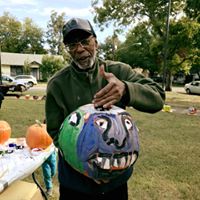
Ira Watkins painting pumpkins with kids in East Waco Park (October 2017)
Speaking with an African American man who grew up in a time of great racial divide, I expected Watkins to be more bitter toward his hometown and his childhood; however, Watkins only had positive things to say about the city. “Waco was alright to me,” he explained. “I have some friends that said they’d never come back to Waco. They haven’t seen the changes. The good thing about it is everyone there is not from there or the surrounding area. They have people there from all over the country, all over the world, and when they come in they come with different ideas. Some of them fall in place with the old guards and some of them bring their own interpretations of what they want it to be.”
“You can’t undo what has been done.”
When asked about Waco’s past, Watkin’s message remained one of hope and progress. Despite the history of racism and prejudice here, Watkins asserts that there has been, and will be, progress in this city. “It’s history, but you can make progress from learning from the past,” explained Watkins when asked about the acts of violence in Waco. He goes on later to attest, “My perspective is that you can’t undo what has been done. You have to live with the past and make strives so that the future can be better.”
My interview with Watkins highlighted the progress Waco has made and motivated me to continue working toward an even better future. His story has also made me realize that Waco is not just its history, but it is its stories, its people, and most importantly its progress.
 Sarah comes from Abilene, Texas and is a senior at Baylor University. She studies Psychology and Professional Writing and hopes to pursue a career in clinical research. She is a dog lover and is known to pull over in her car to stop and pet a dog. She has a hunger for travel and has visited 8 countries and hopes to go to more. A pessimist by nature, but with hope for a better future, she is passionate about civil rights and dreams of a future without borders, hunger, and war.
Sarah comes from Abilene, Texas and is a senior at Baylor University. She studies Psychology and Professional Writing and hopes to pursue a career in clinical research. She is a dog lover and is known to pull over in her car to stop and pet a dog. She has a hunger for travel and has visited 8 countries and hopes to go to more. A pessimist by nature, but with hope for a better future, she is passionate about civil rights and dreams of a future without borders, hunger, and war.
By Sheila Whitehead
Try something for me – Google the phrase “parent engagement in school.” What did you find? When I run that search, I find 3.8 million returns addressing or at least mentioning the importance of parent engagement in our schools. 3.8 million returns are ranging from scholarly articles about why it’s important to how schools can encourage parent engagement. Everybody seems to be talking about it – everyone can see the importance of parent engagement. Research over the past 50 years has shown that when parents are involved in their child’s education, school attendance increases; students have higher grades and score higher on tests; and they are more likely to graduate and go on to postsecondary education. Students experience success – something all parents want for their children. But what does meaningful parent engagement really look like?
That’s something that Waco ISD as a district is working toward defining through intentional discussions, surveys and activities all aimed at bringing the community and families into the conversation. New district leadership has sharpened the focus of that intentionality. Community meetings aimed at supporting WISD campuses and students who need it the most are being held. District-wide events are being planned to support literacy, college for all, the involvement of strong male role models, and summer learning. Surveys are being circulated giving families, community members, staff, and students an avenue to express concerns and point out successes.
Campuses are also working to create opportunities to involve parents. In the three years I’ve been at Waco ISD, I’ve had the opportunity to see a huge number of activities across the district designed to encourage parents to become involved – events ranging from Dia de Los Muertos activities and Nachos and Numbers Night to parent/teacher conferences centered around student’s academic needs. All these events are intended to attract parents to campuses, to become involved with the family of educators that work with our children eight hours a day, five days a week and to have a voice in the academic success of those children.
Our schools and our district are charged with the mission, however, to go beyond Nachos and Numbers and to find ways to support our parents as they seek to become part of their child’s education. With barriers ranging from limited resources to time constraints, that can be a daunting challenge! It’s one that Waco ISD is up to tackling though. Be looking for surveys and invitations to parent activities at your school and in the district. Be part of the conversation around parent engagement at Waco ISD.
But – you might ask – what difference can one parent make in reaching out to become actively engaged at your child’s school and in the district? One study found that when parents are involved at school, the performance of all the children in the school tends to improve – not just the children of those who are actively involved (Henderson & Berla, 1994). That is a profound difference.
The district is opening the door to feedback from you – your child’s first teacher. Are you taking the opportunity to help shape what parent engagement looks like at Waco ISD? It’s your right to be informed; it’s your right to be involved; it’s your choice to be engaged.
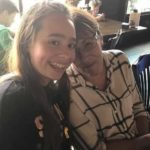 Sheila Whitehead works with Parent Involvement Coordinators across Waco ISD in her role as coordinator of federal programs for WISD. She has been an educator for 32 years and enjoys spending time with her family including her 11-year-old daughter Meghan.
Sheila Whitehead works with Parent Involvement Coordinators across Waco ISD in her role as coordinator of federal programs for WISD. She has been an educator for 32 years and enjoys spending time with her family including her 11-year-old daughter Meghan.
(Last year the Central Texas Artist Collective (CTAC) organized an exhibit downtown called EKPHRASIS. It was an exhibit of art and words. Local poets and artists were paired up to create art and poetry together that was then placed on exhibit in downtown Waco.
 This year the EKPHRASIS theme is An Exploration of Mind, Body, Soul. It takes a deeper look at mental health and illness, grief and loss, trauma, recovery, and healing. The hope for this mental health exhibition is to encourage dialogue stimulated by the 19 Artists and Writer’s ekphrastic displays, to destigmatize misconceptions, and to cultivate an empathic understanding of one another.
This year the EKPHRASIS theme is An Exploration of Mind, Body, Soul. It takes a deeper look at mental health and illness, grief and loss, trauma, recovery, and healing. The hope for this mental health exhibition is to encourage dialogue stimulated by the 19 Artists and Writer’s ekphrastic displays, to destigmatize misconceptions, and to cultivate an empathic understanding of one another.
In today’s blog post, our blogger, Gracie Arias shares her thoughts as a writer participating in EKPHRASIS. “Steve and Angie” she mentions are Steve and Angie Veracruz, two of the organizers of EKPHRASIS. – ALW)
By Gracie Arias
I met Steve and Angie through my husband, about 3 years ago. When they first approached us with the idea for Ekphrasis in 2016, my husband asked me to pair up with him and be the writer for his piece.
I used to write poetry in high school and even competed a couple of times, I reluctantly said “yes.” This has been so wonderful for us as a husband and wife. We were able to team up in a way we never have before and now we are doing our second Ekphrasis.
I’m so excited to see the community gather once again, especially with a topic such as this one. Mental illness runs rampant. It has no specifics of gender, race, age or religion and belief.
Since I was a small child I’ve dealt with these issues first hand. It was somewhat nerve racking to submit this poem. I write about my hurts and experiences first hand. No denying, no third person. ME! Many people close to me don’t even know some of those things about me. But I felt I had to be raw and honest, vulnerable. This was my chance to use my hurts and my depression, my being suicidal and feeling alone, as my platform.
If my message can help at least one person know they aren’t alone and that there is hope, then it’s worth it. I do put my beliefs into the mix because it’s who I am. I know not all share those beliefs and I’m respectful towards that, but I have to share it because it’s a part of my story. It has been the only thing that’s helped me make it through.
I am grateful for this opportunity and I believe people should make the effort to come support all the artist and writers. It’s hard putting yourself out there, but when there is a community willing to open their hearts and minds to these issues, it makes it so much better. What better experience than using your talent, your ability to bring a light to such a dark topic.
EKPHRASIS is a FREE walkable art exhibition. The works are on display in 14 storefront windows of Downtown Waco’s newly established Cultural Arts District, between 6th and 8th streets on Austin and Washington Avenues. The art and words will be on display starting First Friday, November 3. Saturday, November 4 from 5pm – 8:00pm, at the Austin’s on the Avenue Patio (719 Austin Ave.) there will be an Opening Event with poetry readings, performances, and mental health talks from organizations in our community.
 Gracie Arias is 27 years old. She is a stay at home mom and wife, who is still chasing dreams and supporting her husband through his dream chasing. She has been married for 9 years to her wonderful, supportive husband, Carlos Arias. They have three beautiful children, Serena(8), Anabella (5), and Jose (1). She says of her writing, “After writing poetry to help with some of the painful things I experienced as a child, I realized how much it truly helped me in my healing process.”
Gracie Arias is 27 years old. She is a stay at home mom and wife, who is still chasing dreams and supporting her husband through his dream chasing. She has been married for 9 years to her wonderful, supportive husband, Carlos Arias. They have three beautiful children, Serena(8), Anabella (5), and Jose (1). She says of her writing, “After writing poetry to help with some of the painful things I experienced as a child, I realized how much it truly helped me in my healing process.”
he Act Locally Waco blog publishes posts with a connection to these aspirations for Waco. If you are interested in writing for the Act Locally Waco Blog, please email [email protected] for more information.
By Melissa Mullins
So what do water, public health, a police station and your medicine chest have in common? They are all a part of National Prescription Drug Take-back Day.
There’s an epidemic in this country, and it’s killing people and ruining lives. According to the Centers for Disease Control (CDC) drug overdose deaths in the U.S. have never been higher, and the majority of those involve opioids, including prescription opioids. It’s estimated that nearly half the people who misuse prescription opioid medications obtain them from friends and family members, and that there is a nationwide reservoir of such drugs in our medicine cabinets. There are many facets to tackling this complex and critical issue, but you can play a part by ensuring proper disposal of all unused and expired medications in your medicine chest.
Additionally, about 60,000 young kids end up in emergency rooms in the US each year because they got into medicines when no one was looking. Common over the counter medicines like aspirin, multi-vitamins or other pain relievers and even personal care products like diaper ointment are often culprits. Keeping medicines up and away from kids is important but so is proper disposal of unused or unwanted medications, including over the counter (OTC) products.
And last but certainly not least, so called down the drain chemicals are part of what scientists, like Dr. Bryan Brooks at Baylor University, call “contaminants of emerging concern” (CEC’s). When we take medicines, or use products on our bodies, some of it ends up washing down the drain or being flushed down the toilet. Modern wastewater treatment plants, while true marvels that clean up a lot of nastiness from our water, are not designed to remove these CEC’s and may or may not (depending on the compound) do a good job of it. What happens when these compounds make their way back to the river? Researchers have shown that many common compounds can be detected in water and in fish tissue and can have a negative effects on organisms and ecosystems.
You may think you probably don’t have much- that’s what I thought too! A few years ago, I went through my cabinet and removed all expired medications (OTC and prescription) for drug takeback day. Here’s what I took to the police station:
OK OK you say- I am convinced to clean out the medicines in my cabinet! Can I just throw them in the trash or flush them down the toilet? Hopefully you now understand why flushing is a bad idea, but the landfill doesn’t want them either, which is why the City of Waco Solid Waste Services works to help divert them from the waste stream.
Anna Dunbar with the City of Waco shares this information from Spring 2017 regarding the amount of medications diverted from the waste stream during two events: “the DEA reported that Waco PD had about 1,000 pounds (April 29 Drug Take-back event) and the City of Waco collected about 200 pounds during Household Hazardous Waste Day. Baylor PD had about 80 pounds (a good haul for their first time). So, that is a lot of materials put into the right hands (the DEA) for safe disposal.”
The next National Prescription Drug Take-Back Day (includes over the counter medications) is coming this Saturday to a police station near you- see locations and times below: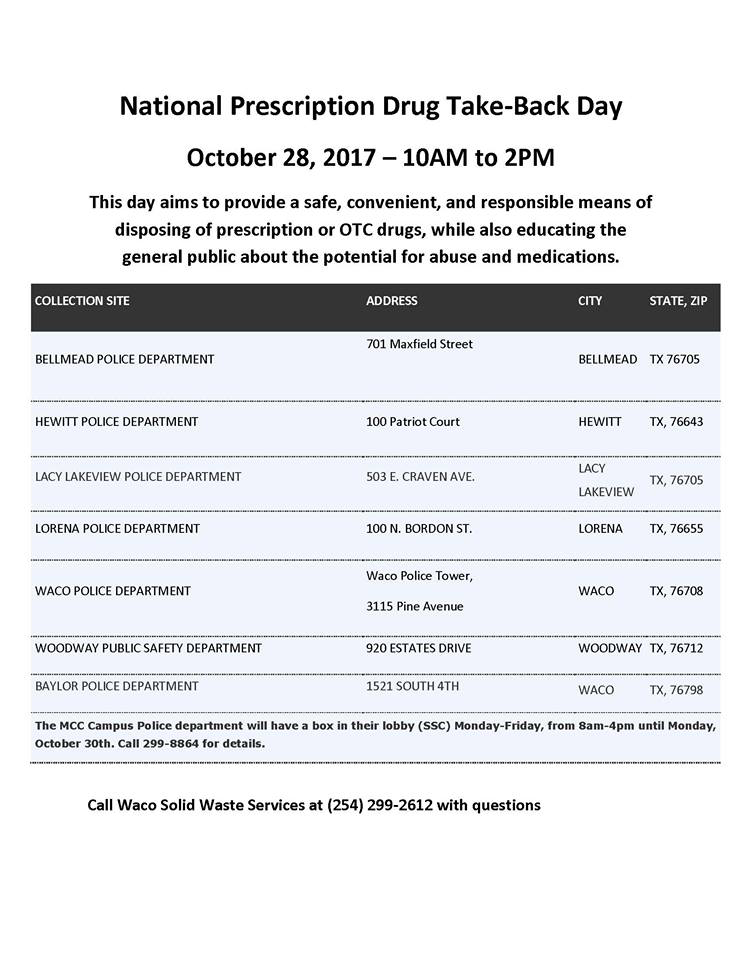
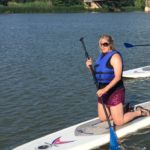 Melissa Mullins coordinates education and outreach for the Center for Reservoir and Aquatic Systems Research at Baylor University where she enjoys engaging audiences of all ages around the important topic of water!
Melissa Mullins coordinates education and outreach for the Center for Reservoir and Aquatic Systems Research at Baylor University where she enjoys engaging audiences of all ages around the important topic of water!
The Act Locally Waco blog publishes posts with a connection to these aspirations for Waco. If you are interested in writing for the Act Locally Waco Blog, please email [email protected] for more information.
(Tami Nutall Jefferson, a married mother and grandmother, is going back to school and she has invited us all along to enjoy the ride. For more posts in this series, click here: Tami’s Big Do Over. – ABT )
By Tami Nutall Jefferson
So, this month – at startup camp – I made history. In my own history book. This past weekend was the first time I have ever pitched a real business idea to a room full of anonymous people. I talk about my dreams and goals with my friends and colleagues all the time, but when it comes to public speaking – and especially about things that are close to my heart – I feel like I have a watermelon in my throat, my mind goes as dark as night, my voice vibrates like I’m yelling into a fan on speed 3, and I start crying inside. Public speaking is my number two fear. Speaking in public to people I don’t know, is number one – which is why my past business endeavors (cough) failed. Because, I refuse to talk to people. Who knows the psychosis behind it, who cares. What matters is how palpable the fright is at that moment – coupled with rejection and embarrassment. So let me tell you what happened.
The Chosen 50
When I first decided to apply at Texas A&M, I started investigating their student entrepreneurship culture online where I discovered this nifty experience called 3DayStartup. Basically, for three days (Friday-Sunday), a group of TAMU budding student business leaders are locked in a room where they flesh out a business from idea to pitch – and deliver that pitch in front of real industry experts and venture capitalists. I kept 3DS on my mental future-things-to-do list while they kept reminding me about it via email almost daily; probably because I signed up for the email list. Then one day in late September, I received an email that said applications were open for the Fall 2017 3DayStartup. A couple of days later something said “Apply!”. As I give in easily to inner-peer pressure, I applied with a non-descript business pitch idea. Soon after, I received another email saying that I was selected. I was one of the Chosen 50! That was impressive to me, until I found out that every student in one of my peer’s startup living community applied but only 6 were selected – my impression instantly elevated to awe. I knew at that point, God put me in that room. Why? That had yet to be revealed. But I digress.
The Struggle Is Real
After acceptance, the reality of The Pitch set in. How do I pitch a real estate development idea that is sexy enough for a room full of college students to vote for? How do I not die in front of people I don’t know? When I went to the orientation, I found out that pitches were optional. Best news ever! I could NOT pitch and just focus on how to build a business as a team – a new concept for me. But, the Thursday night before 3DS, I realized that I am a old @$$ woman, and I can not waste my time, tuition, and opportunity on being scared to talk to people anymore. If I can’t do this now, then what is even the point of me being in University, Leadership Plenty, Central Texas African American Chamber, and all these other organizations I purport to enhance through my service? I have to do it. And I have to kill it. I worked all night on an idea to pitch, and I came up with a clever real estate one. It had to be real estate, because I had to rep my College of Architecture while the other 49 students repped the Engineering & Business schools – which meant app after app after app. So I built a 60 second pitch in that 1 and a half hour drive to College Station on Friday.
The Struggle Is Over
I stood up on stage. I went blank at first. But I did it. And my pitch was chosen for round 2! Round 2 was a follow-up 60 second pitch with audience questions – for which I had no prepared pitch. I wrote one on the spot, but pretty much had to wing it on stage. My idea was ultimately not chosen for the Final 5, but I did get great feedback and interest and much love from the students and our Austin Capital Factory facilitator. I was first pick on a startup team for a business card app where I learned how to lead, co-lead, and fall back as part of a dynamic team. The best part of the weekend – aside from all the great free food and snacks – was when I got to encourage my teammate to deliver our pitch to the crowd. Her fright was real, as evident in her hyperventilating, but she killed it too. I was so proud of her. I loved seeing her growth. I loved this whole experience and I love the energy of being in a room full of millennials (sans the Ma’ams).
Jump
The point in all of this is that – first year, fifteenth year, student, professional, stay at home parent – great experiences and great people live on the other side of fear. Go ahead. Jump that bridge.
 Tami Nutall Jefferson is an older, non-traditional student with a professional real estate background. Tami begins her first academic year at Texas A&M University pursuing a Bachelor’s Degree in Urban Planning and Real Estate Development while commuting between Waco and College Station. Her hope is that Waco becomes the most attractive, modern, vibrant, and prosperous version of itself as an inclusive city and her professional mission is to help make that happen as a real estate developer and entrepreneur. Tami volunteers her time and voice to many downtown Waco placemaking and economic development causes and organizations. To engage and share your non-traditional student experiences with Tami, contact her at t[email protected] or connect with her on Facebook https://m.facebook.com/tami.nutall1
Tami Nutall Jefferson is an older, non-traditional student with a professional real estate background. Tami begins her first academic year at Texas A&M University pursuing a Bachelor’s Degree in Urban Planning and Real Estate Development while commuting between Waco and College Station. Her hope is that Waco becomes the most attractive, modern, vibrant, and prosperous version of itself as an inclusive city and her professional mission is to help make that happen as a real estate developer and entrepreneur. Tami volunteers her time and voice to many downtown Waco placemaking and economic development causes and organizations. To engage and share your non-traditional student experiences with Tami, contact her at t[email protected] or connect with her on Facebook https://m.facebook.com/tami.nutall1
Learn more about 3DS at www.3daystartup.com and Capital Factory www.capitalfactory.com
By Ellen Filgo
When my son was three, his daycare switched their lunchroom to being peanut-free. At first, I wondered what my son – who pretty much subsists on PBJ sandwiches – was going to eat, but soon figured out that he liked the almond-butter and jelly sandwiches I ended up packing in his lunch. While we don’t have any food allergies in our family, I have several friends with children who deal with severe or even life-threatening allergies to several different foods. I also have a good friend whose youngest son was a 23-weeker preemie and for many years got most of his nutrition by feeding tube.
Halloween Trick-or-Treating can be a tricky time for these families. Families that manage allergies or intolerances, or families of kids with celiac disease, diabetes or feeding tubes need to balance the desires of their children to have a fun holiday with keeping them safe. Much of our Halloween candy contains a lot of the most common allergens – wheat, soy, nuts, milk, eggs, and food dyes. In addition to that, much of the Halloween candy that people purchase comes in smaller sizes without nutrition labels, so parents can’t determine what is or isn’t safe to eat.
 This is where the Teal Pumpkin Project comes in. The Teal Pumpkin Project “encourages people to raise awareness of food allergies and promotes inclusion of all trick-or-treaters throughout the Halloween season.” This movement provides a way – by offering non-food treats – to include children who normally would be left out of the fun of Halloween Trick-or-Treating. Families can participate by providing a separate bowl of non-food treats* for trick-or-treaters and by putting a teal-colored pumpkin at their door to let people know of their participation in the project. The Teal Pumpkin website provides a map where families can register their participation so that other families can connect with them.
This is where the Teal Pumpkin Project comes in. The Teal Pumpkin Project “encourages people to raise awareness of food allergies and promotes inclusion of all trick-or-treaters throughout the Halloween season.” This movement provides a way – by offering non-food treats – to include children who normally would be left out of the fun of Halloween Trick-or-Treating. Families can participate by providing a separate bowl of non-food treats* for trick-or-treaters and by putting a teal-colored pumpkin at their door to let people know of their participation in the project. The Teal Pumpkin website provides a map where families can register their participation so that other families can connect with them.
In addition, Holy Spirit Episcopal Church on Wooded Acres Drive provides an entire Teal Pumpkin-friendly Trunk or Treat on October 31 from 6-8 pm. Every single vehicle at the Trunk or Treat will have a bowl of non-food treats so that trick-or-treaters can have one fun and safe event to participate in.
Please join in this growing movement to make Halloween more inclusive of all trick-or-treaters.
* There are lots of great non-food treats that kids of all sorts love! The Teal Pumpkin Project provides a great list: Glow sticks, bracelets, or necklaces, Pencils, pens, crayons or markers, Bubbles, Halloween , Erasers or pencil toppers, Mini Slinkies, Whistles, kazoos, or noisemakers, Bouncy balls, Finger puppets or novelty toys, Coins, Spider rings, Vampire fangs, Mini notepads, Playing cards, Bookmarks, Stickers, Stencils
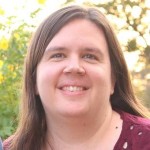 Ellen Filgo is a research librarian at Baylor and a Wacoan of 10 years. She is also the director of the Waco Diaper Bank and a member of Holy Spirit Episcopal Church. She loves living in Sanger-Heights with her husband, her stepson and her two energetic little boys. She has been known to get sidetracked researching the answer to a random question casually asked in a Facebook post.
Ellen Filgo is a research librarian at Baylor and a Wacoan of 10 years. She is also the director of the Waco Diaper Bank and a member of Holy Spirit Episcopal Church. She loves living in Sanger-Heights with her husband, her stepson and her two energetic little boys. She has been known to get sidetracked researching the answer to a random question casually asked in a Facebook post.
By Louise Powell
A year ago at Christmas time in our city, a young family with a tiny infant was suddenly homeless. When the baby’s father requested help at a local emergency shelter, he was told that Mom and Dad were welcome, but their baby would have to be placed somewhere else. When they called an 800 number for assistance, they were told that the only emergency family shelter in Central Texas was Sally’s House. Majors Anita and Brad Caldwell of the Waco Salvation Army remember that the young mother wanted only one Christmas gift—a plastic baby bathtub—because every time she bathed her little boy in a gas station sink, he hit his head on the hard metal faucet.
Sally’s House is vital to the community because it is the only emergency shelter specific for families with children in McLennan County. And, Sally’s House needs the help of the community because its federal funding has been cut. In 2015/2016 the federal government’s emphasis changed from shelter assistance funds to rapid rehousing. Although rapid rehousing of the homeless is a worthy goal, families in crisis will always need short-term emergency accommodations until other options become available.
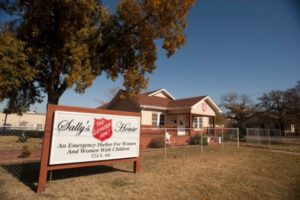 So for those who are unfamiliar with Sally’s House, what does the place look like? The small house is attractive, thanks to students from Live Oak Classical School who have spent hours this year repainting the exterior fences and sidewalk. The house itself is modest, with three bedrooms and bathroom facilities for families, one bedroom with bunkbeds for single women, two cots in the hallway, and a small area off the hallway for washers and dryers. A Salvation Army staff person is always on duty to safeguard the families at night. Professional case managers work directly with residents to provide budgeting, life skills, and other needed resources and assistance to focus on long-term solutions. Daily breakfast and a hot evening meal are provided at the Salvation Army Community Kitchen. Within 30 days, most families are transitioned to apartments.
So for those who are unfamiliar with Sally’s House, what does the place look like? The small house is attractive, thanks to students from Live Oak Classical School who have spent hours this year repainting the exterior fences and sidewalk. The house itself is modest, with three bedrooms and bathroom facilities for families, one bedroom with bunkbeds for single women, two cots in the hallway, and a small area off the hallway for washers and dryers. A Salvation Army staff person is always on duty to safeguard the families at night. Professional case managers work directly with residents to provide budgeting, life skills, and other needed resources and assistance to focus on long-term solutions. Daily breakfast and a hot evening meal are provided at the Salvation Army Community Kitchen. Within 30 days, most families are transitioned to apartments.
Last year 172 women with children, families, and single women stayed at Sally’s House. Too often all the beds–plus the cots in the hallway–are full, which means desperate families have to be turned away. Many of the moms, dads, and children no doubt spend nights in their cars or on the street unwilling to have the family split up among other shelters.
Because sometimes there truly is no room at the inn, the dream of the Waco Salvation Army Women’s Auxiliary, a group of local women who support Salvation Army ministries, is not only to sustain Sally’s House as it is now, but also to eventually build a much larger facility.
Won’t you, Waco and McLennan County residents, help us provide consistent help to homeless children and families? The Women’s Auxiliary of the Salvation Army is holding a fundraising event, “Repurpose for a Purpose,” where everything old is made new again. Waco’s best professional and amateur designers have contributed their finest work — repurposed furniture, household items, clothing, and art – to be auctioned off to the highest bidder. All proceeds benefit Sally’s House. We invite you to enjoy this special evening of fun, fabulous food, and incredible finds! For tickets and more information, visit www.SalvationArmyWaco.org/repurpose or call (254) 756-7271.
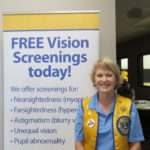 Louise Powell is currently an adjunct English instructor at Baylor and MCC. Previously she was an English teacher and administrator in Waco I.S.D. She is married, the mother of three grown children and grandmother to seven. Louise is a member and secretary for the Women’s Auxiliary of the Salvation Army and a past president of Waco Founder Lions Club, for which she currently serves as Vision Screening Chair.
Louise Powell is currently an adjunct English instructor at Baylor and MCC. Previously she was an English teacher and administrator in Waco I.S.D. She is married, the mother of three grown children and grandmother to seven. Louise is a member and secretary for the Women’s Auxiliary of the Salvation Army and a past president of Waco Founder Lions Club, for which she currently serves as Vision Screening Chair.
By Glenn Robinson
Given the complexity of today’s health care system, weighing options and making treatment decisions are difficult enough as it is.
While we are all grateful for the wonderful doctors and nurses who work long hours and go above and beyond for their patients, often it is family caregivers who are the unsung heroes of health care.
They are the ones who provide the relentless daily support for their loved ones who cannot care for themselves because of frailty, illness, injury, or disability. Their care is critical to sustaining or greatly improving life.
Being a family caregiver is the very definition of ‘labor of love.’ Spouses who act as the primary family caregiver bear an enormous burden. They routinely perform complex tasks virtually identical to what doctors or nurses perform in a clinic, such as medication management, wound care, using meters and monitors, and much more.
Making the job even more difficult is that more than half of spouses report no additional help from family or friends or home care aides, and three out of five caregivers also are members of the traditional American labor force.
And the cost of informally caring for particularly the elderly by friends and relatives in the United States? More than a half trillion dollars per year, according to one study, with Americans spending an estimated 30 billion hours annually providing care to elderly relatives and friends.
When a loved one is seriously ill – perhaps even dying – the decision-making process for the patient and his or her family becomes that much more difficult.
Too often, though, those decisions are not able to be made by the patient when the time comes. Rather, it becomes a burden that falls on a loved one – but it doesn’t have to be that way.
Advance care plans, which include advance directives, attempt to take the guesswork out of figuring out a patient’s wishes and values about end-of-life care while they are still of sound mind.
Advance directives are legal documents that establish guidelines for what treatments patients should or should not receive. They can lift the emotional burden off of loved ones responsible for making care decisions, because it is clear what the patient wants.
Both a living will and a health care power of attorney are types of advance directives. Unfortunately, a recent study found that just 29 percent of Americans had completed a living will that contained specific end-of-life care wishes, and only 33 percent had designated a health care power of attorney.
A rapidly growing field of medicine called Palliative Care is helping patients and their family members navigate the complex decision-making process surrounding serious illness and end-of-life care.
Whether it’s physical, emotional, or financial relief, Palliative Care is rapidly becoming a critical resource helping patients and families in difficult circumstances cope.
The goal of Palliative Care is to relieve a patient’s disease symptoms and minimize the side effects of treatment regardless of long-term prognosis. Palliative Care specialists often help families and patients make difficult decisions about whether to use highly aggressive therapies, and sort through treatment options – aligning them with the expectations of the patient and their family.
Additionally, palliative caregivers provide comfort care – which is spiritual, emotional, and psychological support and guidance.
The efforts of palliative caregivers are producing tangible results. Research shows that Palliative Care patients report improvement in pain or nausea, better communication with doctors and loved ones, and care that is more in line with their wishes.
Not only does not having an advanced care plan in place add burden to family members during an already stressful and emotional time, but it’s a burden on the health care system as well. The cost of care in the last week of life is 55 percent higher for those who have not had advance care planning discussions.
A Baylor Scott & White Health study showed that palliative patients and their families spend an average of $3,000 less in hospital costs than patients with similar conditions who did not receive such care, and these palliative patients often received not less, but better, care. This means having this very personal conversation is a decision that impacts all of us.
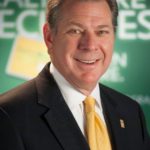 Glenn Robinson is the President of Baylor Scott & White Medical Center – Hillcrest. He has over 30 years experience in hospital and health care management, and currently serves on several Boards associated with the Texas Hospital Association and the American Hospital Association. In addition, Glenn is Past-Chair and an active member of the Greater Waco Chamber of Commerce, and serves on the Prosper Waco Board.
Glenn Robinson is the President of Baylor Scott & White Medical Center – Hillcrest. He has over 30 years experience in hospital and health care management, and currently serves on several Boards associated with the Texas Hospital Association and the American Hospital Association. In addition, Glenn is Past-Chair and an active member of the Greater Waco Chamber of Commerce, and serves on the Prosper Waco Board.
This report, and other episodes of “The Business of Healthcare,” are available at KWBU.org.
The Act Locally Waco blog publishes posts with a connection to these aspirations for Waco. If you are interested in writing for the Act Locally Waco Blog, please email [email protected] for more information.
By Sarah Frank
At age 21 I feel as lost about sex as I did at 15.
Raised in a strong Christian community in a tiny Texas town, my sex education focused on abstinence. I can’t recall having a formal conversation about sex with either of my parents. The majority of my knowledge on sex came from the two days we covered it in health class and conversations in the girl’s locker room.
When I was in high school, my church briefly ran a program on Sunday nights where the girls and boys would separate and discuss passages from the Bible. One week, we had a Bible study over relationships and dating. Our group leader took the time to tell us about her past relationships and how difficult her love life was growing up. She explained that the first man she kissed she ended up marrying and described how much happier she was because of the fact that she waited. She encouraged us to do the same – to wait to kiss or do anything physical until after, what now seems to me to be, an obscene amount of time has passed in the relationship.
Meanwhile, in the next room over, the boys talked about sex and masturbation. The teaching was far from scientific. For example, we girls put our ears up to the door and overhead the statement “Every time you masturbate a kitten dies.” Whether the boys also got the speech about waiting to have any physical contact in a relationship at all, I do not know, but it is clear to me the boys and girls were hearing vastly different things and neither group was being given any understanding of what a healthy sex life looks like.
None of these conversations in health class, church, or in the home ever taught me how to have safe sex. In fact, these conversations have had a more damaging effect on my love life and in my relationships than a positive one. Growing up, I have been ashamed of my natural, human emotions because every older member in my family and in the church taught me that this desire was sinful. I never felt as if I had someone to talk to about sex and, consequently, I treated sex as something to be feared and not as a loving connection between two consenting adults.
As young adults my friends and I struggle with figuring out sex and taking care of our reproductive health. Abstinence-only sex programs didn’t work for us. Fear mongering didn’t stop us from exploring our basic human drive, it only made us terrified to speak with our parents or other adults during the time when we needed the most guidance. These programs avoided teaching us how to prevent pregnancy and STDs which is information we all, even married couples, need to know.
Even now as twenty-somethings, the closed-off approach to sex we were taught growing up continues to influence our sex lives and our relationships. Some of us are afraid of sex and intimacy even in long-term relationships because we were taught these desires are bad.
In retrospect, I see how important it is to talk about sex in an open and honest environment. As uncomfortable as it was to speak with my parents about sex, being able to have that open communication would have been better for me in the long run. I didn’t know where to set my boundaries, and I didn’t know what constituted sex. When the time came to practice my values, I didn’t know what they were. I had no one to talk to about this because I felt as if the adults I knew would only judge and condemn me. An open approach to sex would have given me someone to speak with and may have saved me hurt and stress.
I believe that sex should not be such a taboo subject in the home. Instead there should be open and honest discussions about safe sex, family values, and how to determine personal values surrounding sex and relationships. Instead of learning about sex through fear tactics designed to prevent sexual activity, I would have benefited more from being taught what a healthy relationship looks like and why healthy relationships are important regarding sex and intimacy. It is my belief that every person deserves to have a healthy and safe sex life when they are ready and this comes through proper teaching and open and honest communication.
In the 2016 Waco-McLennan County Community Health Needs Assessment it was discovered that 62% of women in McLennan County have their first child by the age of 21. For more information about teen pregnancy awareness and prevention, please visit: www.wacofoundation.org/AboutUs/OurSmartBabiesInitiative.aspx
 Sarah comes from Abilene, Texas and is a senior at Baylor University. She studies Psychology and Professional Writing and hopes to pursue a career in clinical research. She is a dog lover and is known to pull over in her car to stop and pet a dog. She has a hunger for travel and has visited 8 countries and hopes to go to more. A pessimist by nature, but with hope for a better future, she is passionate about civil rights and dreams of a future without borders, hunger, and war.
Sarah comes from Abilene, Texas and is a senior at Baylor University. She studies Psychology and Professional Writing and hopes to pursue a career in clinical research. She is a dog lover and is known to pull over in her car to stop and pet a dog. She has a hunger for travel and has visited 8 countries and hopes to go to more. A pessimist by nature, but with hope for a better future, she is passionate about civil rights and dreams of a future without borders, hunger, and war.
By George Stonikinis
The importance of spending time with my children was instilled in me by my father who always made it a point to make time to take my sister and me to some museum or an afternoon movie during the long days of summer.
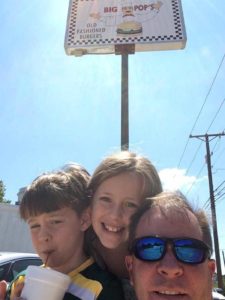 My father is an excellent cook, and he often would whip up some great repast for a summer lunch. However, my fondest memories of those days were of lunches at the “The Steer,” a local restaurant in my hometown in Virginia. In answer to my protests requesting a burger at one of the fast food joints, my father always answered, “Nothing interesting ever happened at a fast food place.”
My father is an excellent cook, and he often would whip up some great repast for a summer lunch. However, my fondest memories of those days were of lunches at the “The Steer,” a local restaurant in my hometown in Virginia. In answer to my protests requesting a burger at one of the fast food joints, my father always answered, “Nothing interesting ever happened at a fast food place.”
Oh how right he was! The entire local color of my hometown would pass before me as Dad and I ate our bacon cheeseburgers with fries (Dad was an onion ring man). Many unspoken lessons were learned in that velvet painting festooned dining room: how to treat people, the wisdom of an old regular who always had some interesting story, or just the life story of Janice, the waitress whose delivery of our food was always accompanied by a strong smell of hairspray. I valued those times with my father. Living 2,000 miles away from him I don’t get to share a lunch with him as often as I’d like.
As a teacher, I am blessed with the ability to spend summers with my 7 and 8 year-old daughters. This past summer, faced with the challenge of filling days with indoor activities that would avoid the heat, my daughters and I came up with the idea of The 2017 Burger Tour of Waco.
If you are looking for reviews of our dining experiences, you will not find them here. Initially I had intended to rate our experiences and have even been implored to publish our rankings on social media, but I came to the realization that to do so detracted from our adventure. If we began to evaluate our experience then it began to devalue it in many ways. I did not want our time together to be relegated to a Yelp! Review.
We chose eight locally owned burger joints (no fast food allowed) over the course of the summer. Cupp’s Drive-In, Tom’s Burgers, Health Camp, Kitok’s, Dubl-R, Kims, Captain Billy Whizbang’s, and Big Pop’s were our chosen destinations for our culinary tour. I will not describe all of our stops and omissions should not be seen as negative reviews. Rather, some of the memories are a bit more indelible than others.
Our first stop was Health Camp, where we partook of a cheeseburger combo with fries and I got to watch their eyes light up as I introduced them to their first peanut butter and chocolate milkshake. As we ate I described to them how long the restaurant had been there and discussed the traffic circle and the nearby Elite Café. It was there that we started our tradition of taking a group selfie in front of the signs of the restaurants.
At Cupp’s, one of my daughters let it be known that we were on a burger tour which immediately raised the staff’s competitive spirit. They wanted to know what other places we’d visited and how they compared. As they would at Dubl-R, the girl’s loved sitting at the counter watching their food being cooked and hearing the stories of the history of the restaurant.
Kitok’s was a repeat performance for us as I had introduced them to the place last year between soccer games. They remembered it as the place I had tried to sneak vegetables into their diet via the oriental fries. Sadly, they didn’t fall for it this time. We did, however; use the time to celebrate my hiring to a new teaching position. We are still working on the vegetables.
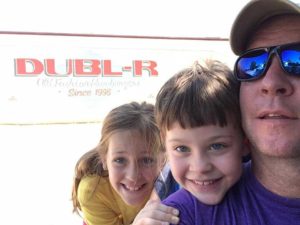 Big Pop’s brought an unexpected church reunion as it seemed like half of our congregation was dining there that day. The impromptu gathering along with the juicy burgers, made the place feel like home and the relaxed atmosphere allowed the girls and I to joke and laugh with our friends.
Big Pop’s brought an unexpected church reunion as it seemed like half of our congregation was dining there that day. The impromptu gathering along with the juicy burgers, made the place feel like home and the relaxed atmosphere allowed the girls and I to joke and laugh with our friends.
The topic of our summer challenge comes up in conversation sometimes as we plan are for next year’s challenge, with taquerias, breakfast places, and sandwich shops in the mix (sadly, vegetables are still not on the list.) My girls seem less interested in the type of food and more so in the time we will spend together. What began as as a simple way to idle away the hours of a hot day has grown into a shared family memory with pictures to boot!
To this day I do not know if my father took us out to lunch just to eat or if he had some deeper, educational motive in mind. I’d like to think that he, like myself, discovered that while life will always teach you a lesson and we will always have food; the time we have with our children is far more precious.
 George Stonikinis is a Texas History teacher at La Vega Junior High School. He is the father of 3 daughters, 4 cats, and one crazy dog. A self-described nerd, he enjoys history and metal detecting.
George Stonikinis is a Texas History teacher at La Vega Junior High School. He is the father of 3 daughters, 4 cats, and one crazy dog. A self-described nerd, he enjoys history and metal detecting.
